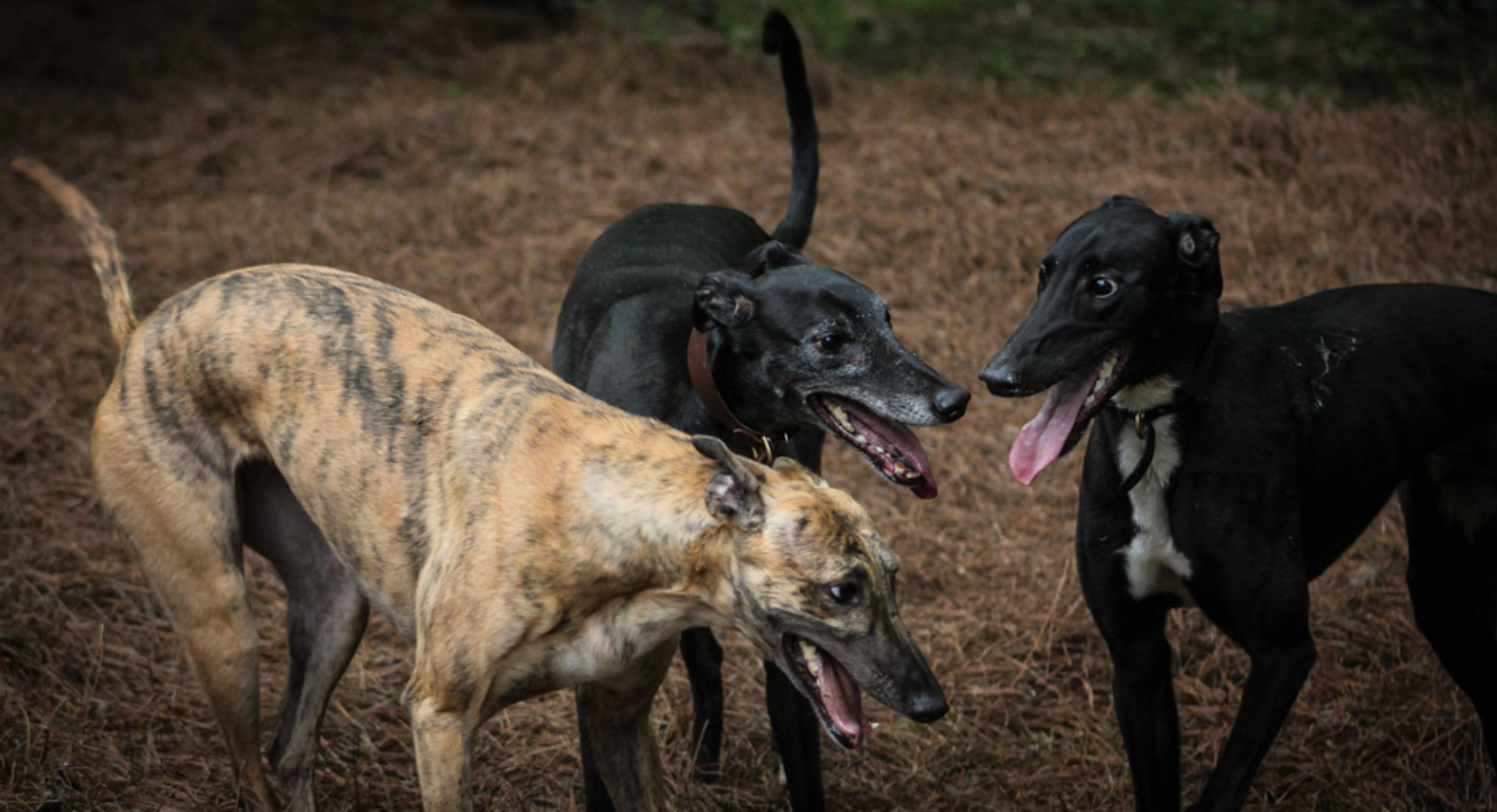We all have certain parts of our day that we look forward to. I look forward to the mornings. I love my first cup of coffee and my walk. Exercise is very important for me. Exercising keeps me upbeat and energetic.
When I adopted Jethro I was told that he would need hardly any exercise and that Greyhounds are lazy. I remember hearing that a few good sprints per week would be plenty for him. This was a foreign idea to me. I had only owned terriers prior to owning Jethro and they required a lot of exercise or they were impossible to live with. But hey, Clint and I wanted a low maintenance dog so maybe my instincts were wrong.
Life with Jethro started off on the wrong foot. Jethro was a creature of habit and the lack of structure in his new environment was overwhelming for him. Prior to adopting Jethro, I had read an article that suggested waiting to start obedience with a retired racer so that they would be more bonded to you when you started. I felt that I should start training his ASAP but wanted to follow the advice of other more experienced Greyhound owners. Needless to say, Jethro became a very frustrated Greyhound that needed a routine and an outlet for his energy.
After a month of struggling with our new situation, I registered Jethro in obedience class. Our local obedience class was filled with small, yappy, fluffy dogs and big barking dogs in need of some manners. Jethro was freaked out. Fortunately, the trainer knew a thing or two about Greyhounds and hooked up us with another couple that adopted a Greyhound. The humans and the dogs hit it off! Jethro and Champ would get to work in a smaller group that was quite. I picked up some training techniques and felt that I could get Jethro where he needed to be. We started practicing at home.

I stopped reading about Greyhounds and started searching for articles on training headstrong independent dogs. Jethro’s life became very structured. We walked every morning and practiced training exercises at night. I realized Jethro and I both needed a routine if our relationship was going to work out. Walking and training Jethro was great! It stimulated our bond and also helped to alleviate some of his anxiety!

I added Darla to the mix and she loved exercise. I would often walk Darla alone to help with her leash manners when she did something good, I would run with her as her reward. She loved this and we still use running as a reward!

When Sashi came home I was not sure what to expect. I heard that Greyhound pups were land-sharks and difficult. However, I found Sashi’s puppyhood very enjoyable, as long as he was exercised. Sashi had an affinity for chewing on high-end leather goods. I learned quickly that a tired pup with nice meaty bone doesn’t eat your leather accessories. Sashi needed a lot of exercised. My nightly routine included making a vodka and tonic, sitting in a lawn chair, and throwing a ball until Sashi was pooped!

Exercise makes us all feel good, even dogs. Exercise recommendation for dogs varies by breed. Generally speaking, dogs need 30 minutes to 2 hours of exercise per day. It’s hard to say that all Greyhounds need the same amount of exercise per day. As dogs physiologically adapt to exercise—At first, the Greyhound may only be able to walk for 20 minutes but gradually adding time is important to achieve a balanced exercise program. While Greyhounds do enjoy lying around they still need exercise. Exercise is important to their physical and mental well-being.
Even if your dog doesn’t have behavioral problems and isn’t overweight there is nothing like smelling where the neighborhood cat has been and the pee of all the dogs that peed on that scrub before yours!
Southeastern Greyhound Adoption (SEGA) hosts an annual Athletes helping Athletes 5K—this year is our 10th anniversary! In addition to the 5K we also have a fun one-mile walk that you can bring your Greyhounds on. There is nothing simpler or sweeter than getting out and walking with your Greyhound. I hope to see all you Metro Atlanta Greyhound lovers at the 5K! If you are planning to attend the 5K register here and use the code RUN4FUN17. The first 10 people to use the code will get 5$ off their race registration! I look forward to seeing you and your Greyhound at the 5K!




















